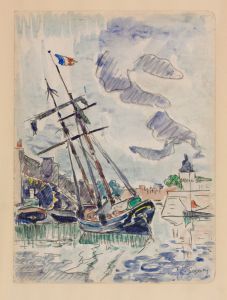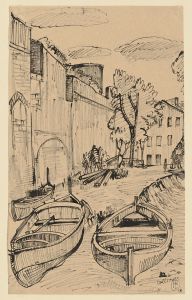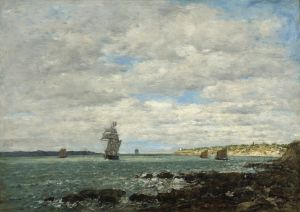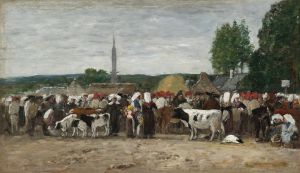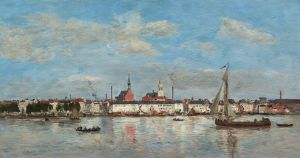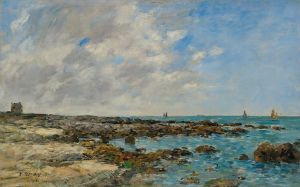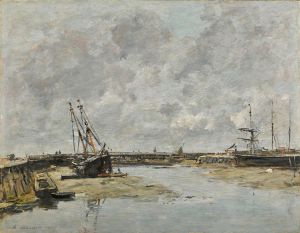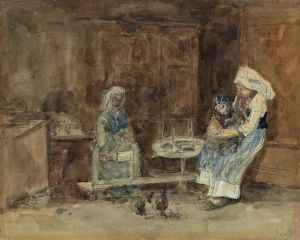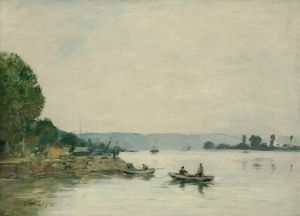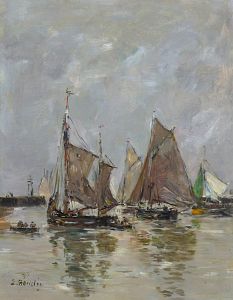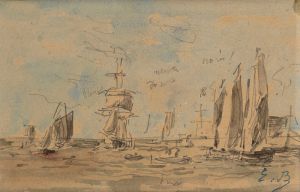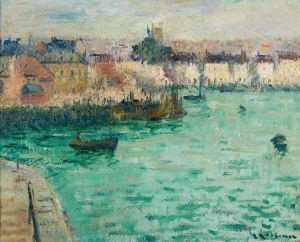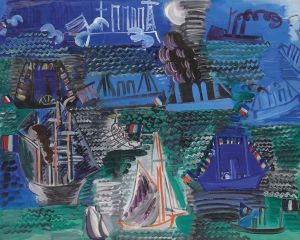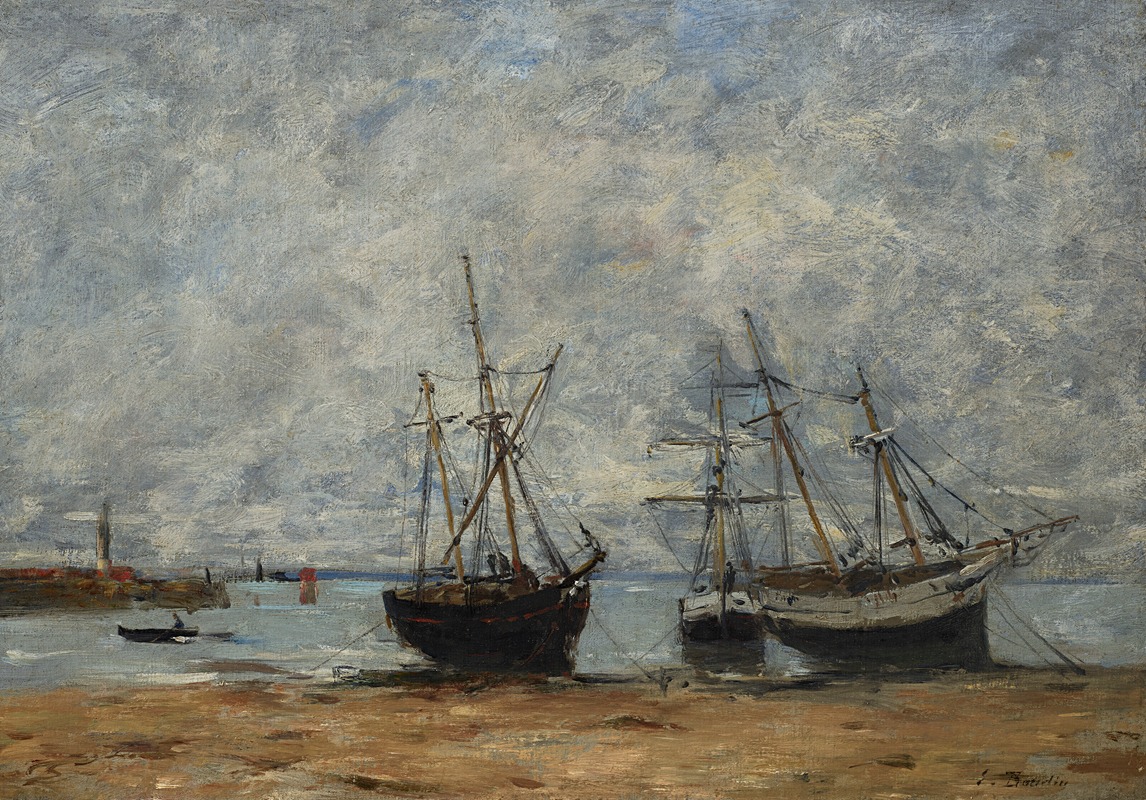
Portrieux, le port marée basse
A hand-painted replica of Eugène Boudin’s masterpiece Portrieux, le port marée basse, meticulously crafted by professional artists to capture the true essence of the original. Each piece is created with museum-quality canvas and rare mineral pigments, carefully painted by experienced artists with delicate brushstrokes and rich, layered colors to perfectly recreate the texture of the original artwork. Unlike machine-printed reproductions, this hand-painted version brings the painting to life, infused with the artist’s emotions and skill in every stroke. Whether for personal collection or home decoration, it instantly elevates the artistic atmosphere of any space.
Eugène Boudin was a prominent French painter, born on July 12, 1824, in Honfleur, France. He is often regarded as one of the precursors of the Impressionist movement due to his emphasis on capturing the effects of light and atmosphere in his landscapes and seascapes. Boudin is particularly known for his paintings of coastal scenes and harbors, which vividly depict the changing skies and tides of the Normandy coast.
"Portrieux, le port marée basse" is one of Boudin's works that exemplifies his fascination with maritime subjects. The title translates to "Portrieux, the Port at Low Tide," indicating the setting of the painting. Portrieux, now known as Saint-Quay-Portrieux, is a coastal town in Brittany, France. This location, like many others along the French coast, provided Boudin with ample inspiration for his plein air painting practice.
Boudin's technique involved painting outdoors to capture the transient effects of light and weather directly from nature. This approach was innovative at the time and laid the groundwork for the Impressionist movement, which would later be popularized by artists such as Claude Monet, who was directly influenced by Boudin. In "Portrieux, le port marée basse," Boudin captures the scene at low tide, a moment when the water recedes to reveal the harbor's floor, boats resting on the sand, and the bustling activity of the port.
The painting is characterized by Boudin's loose brushwork and his ability to convey the atmosphere of the scene. His palette often included soft blues, grays, and earth tones, which he used to depict the sky, sea, and land harmoniously. The composition likely includes elements typical of Boudin's harbor scenes, such as boats, figures, and the interplay of light and shadow on the water and wet sand.
Boudin's work was well-regarded during his lifetime, and he exhibited regularly at the Paris Salon. His dedication to capturing the natural world with immediacy and sensitivity earned him the admiration of his contemporaries and successors. Today, Boudin's paintings are held in high esteem and can be found in major art museums around the world, including the Musée d'Orsay in Paris and the National Gallery of Art in Washington, D.C.
"Portrieux, le port marée basse" is a testament to Boudin's skill in rendering the subtle nuances of coastal life and his pioneering role in the development of modern landscape painting. His ability to capture the fleeting moments of nature with such clarity and emotion continues to resonate with audiences, making his work an enduring part of art history.





